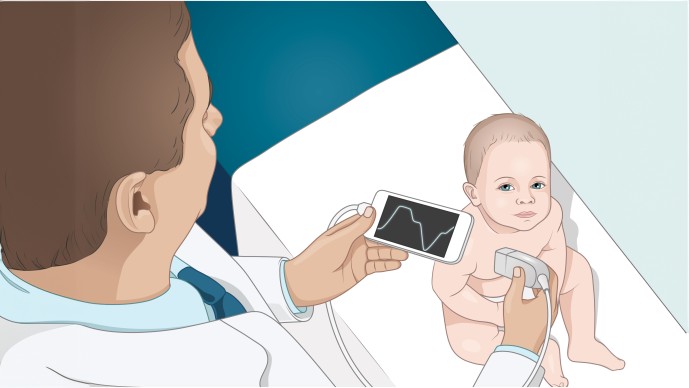Accelerate Development of New Therapies for Childhood Cryptosporidium Infection (Round 18)

The Opportunity
Diarrhea caused by infection with Cryptosporidium species (primarily Cryptosporidium hominis or C. parvum) is becoming increasingly appreciated as a major contributor to diarrhea morbidity and mortality in children in the developing world. This has been supported by data generated from the Global Enterics Multisite Study (GEMS)[1]and Mal-ED[2]epidemiological studies. These data suggest that Cryptosporidium;may be responsible for a significant fraction of all cases of moderate-to-severe diarrhea in children under two living in these regions. Currently, no vaccine exists and the only approved drug for the treatment of diarrhea caused by Cryptosporidium infection is nitazoxanide (NTZ). Of particular importance, the efficacy of NTZ in those most at-risk for morbidity and mortality associated with Cryptosporidium and diarrhea (malnourished children and the immunocompromised) appears modest. Current tools for investigation of Cryptosporidium biology and development of new interventions are lacking. In order to make progress in addressing the burden of cryptosporidial diarrhea in children living in the developing world, more sophisticated tools are needed.
The Challenge
Due to a historical lack of funding for both basic and applied research in Cryptosporidium, particularly for pediatric disease, this area lags behind many others in available knowledge and tools for research. Currently, methods to allow cultivation in the laboratory are nascent and not well-established, there are no methods for cryopreservation of the parasites, and tools for manipulation of the parasite genome are very limited and have only very recently been described. Due to these constraints, access to standardized and well-characterized research strains remains limited and moderate- to large-scale drug screening campaigns have been challenging or impossible to contemplate. These technical challenges are compounded by a lack of well-validated drug targets as well as a poor understanding of the optimal pharmacology for treatment of this infection. While significant progress has been made in the past two years, there remains room to improve the overall arsenal of tools and techniques that would allow a robust program in discovery and development of new drug treatments for pediatric cryptosporidiosis. Additionally, as new therapeutics are developed, there remain outstanding questions about how best to ensure that these agents are maximally effective and safe in our target population, children less than 2 years old with diarrhea who also likely suffer from enteric dysfunction due to repeated exposure to diarrheal pathogens and poor nutrition. The safety and efficacy of therapeutics must take into account these additional factors, and methods to assess their impact on drug metabolism, pharmacology, and efficacy prior to entering the clinic are needed.
What we are looking for:
This call is soliciting new tools and technologies that have potential i) to overcome the technical barriers in working with Cryptosporidium that have historically hampered progress, and ii) to improve our ability to develop and translate active compounds into effective therapies for treatment of pediatric cryptosporidiosis. The goal of this call is to develop broadly applicable approaches that can be used to accelerate development of therapeutic interventions, rather than to support the development of specific interventions themselves.
A few of the many potential examples to be considered include:
- Development of novel moderate- to high-throughput screening approaches that target different life-stages of the parasite or that recapitulate aspects of the realistic in vivo environment of the parasite (e.g. gut-on-a-chip or other like technologies);
- New methods for the identification and validation of drug targets in Cryptosporidium,as well as methods for interrogating validated targets within the context of whole cell phenotypic assays (e.g. target-based reporter assays);
- Novel methods for genetic manipulation of the Cryptosporidium genome, particularly those that allow regulated gene expression;
- Systematic approaches to explore opportunities for host-directed therapies, based on a rational understanding of parasite metabolism and parasite/host interactions;
- Validation of small animal disease models that are more tractable than the calf or gnotobiotic piglet, but which model human infection and disease (particularly valuable if immunocompetent and/or supportive of C. hominis infection);
- Assessment of biomarkers with potential to monitor clinical drug efficacy, specifically with regard to parasite elimination;
- Pre-clinical in vitro, in vivo, or in silico models to assess the role of co-infection, the microbiome, and gut dysfunction on drug efficacy;
- Novel methods to establish PK/PD relationships for anti-cryptosporidial drugs in the context of gut location of pathogen infection and disease pathology.
We will not consider funding for:
- Applications focused on fundamental scientific research into parasite biology;
- Epidemiological studies to further define the burden of Cryptosporidium infection;
- Development of Cryptosporidium vaccines or other preventative approaches, including improved sanitation or environmental interventions;
- Development of point-of-care diagnostics for Cryptosporidium;
- Development of specific therapeutic interventions, including small molecules, pre-biotics, probiotics, “functional foods”, or other microbiome-directed interventions;
- Proposals involving clinical trials in human volunteers or patients;
- Ideas or approaches that are not novel and innovative, but rather application of well-established methods or approaches.
__________________________________
[1]Kotloff, KL et al., “Burden and aetiology of diarrhoeal disease in infants and young children in developing countries (the Global Enteric Multisite Study, GEMS): a prospective, case-control Study.” Lancet 2013 Jul 20; 382 (9888): 209-22
[2]Platts-Mills, JA, et al., “Pathogen-specific burdens of community diarrhea in developing countries: a multisite birth cohort study (MAL-ED)” Lancet Global Health 2015 Sept; 3 (9):e564-75